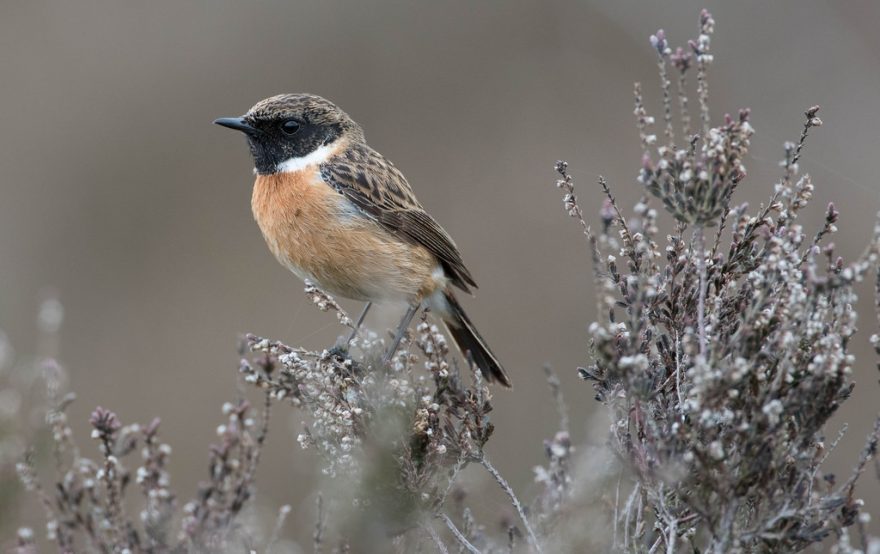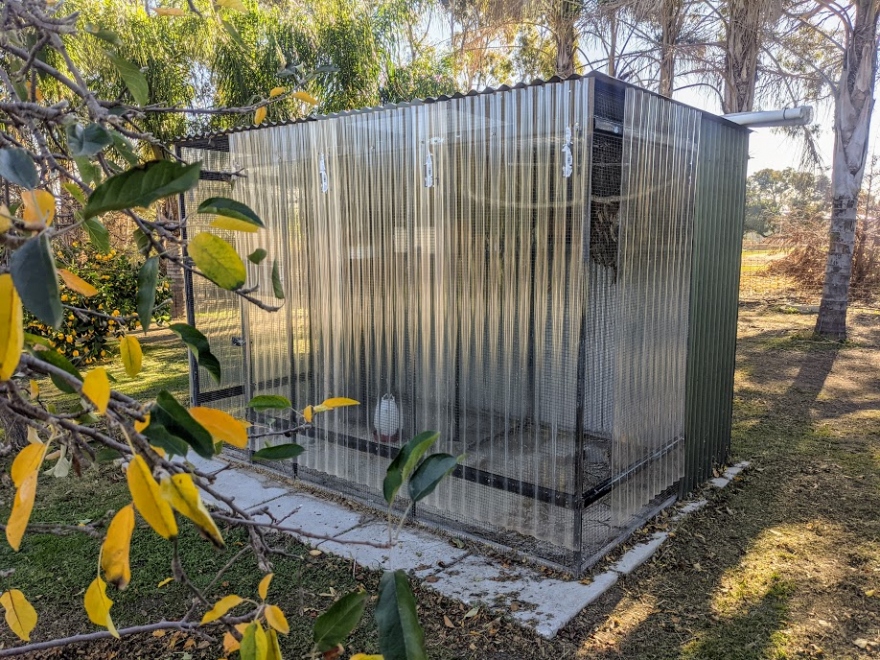It’s right in the middle of winter here in Australia, so it’s the perfect time to share some tips to keep your aviaries warm and dry during the cold weather. If you’re on the other side of the planet and hot weather is your concern right now, check out our “keeping your birds cool” article which is basically the opposite of this.

Cold temperatures, as long as they’re above freezing, generally pose very little threat to most of the birds we keep in captivity. Cold winds and draughts, wind and rain exposure, and fungal/bacterial infections are the true killers.
1. Provide Heat
If cold is the problem, providing heat is the obvious solution. Heat lamps and heated perches designed specifically for birds can be purchased, and birds quickly learn to sit near or on them when they’re feeling cold.
Make sure birds can’t come in contact with the source of heat otherwise they might get burned. A popular solution to this problem is to place heated globes inside of terracotta pots—this also limits the amount of light in the aviary at night.
2. Aviary Position
Make sure the exposed faces of your aviary are positioned away from wind and rain. You should also ensure that your aviary receives direct sunlight in the morning, so that your birds can sunbathe to recover from the early-morning chill.
3. Aviary Protection
If you’re not able to position the aviary away from direct wind and rain, the next best option is to cover the aviary. A tarpaulin over the wire portions of the aviary is usually adequate, however clear plastic sheets or cafe blinds provide far better viewing of the birds.

Clear plastic has the added advantage of causing a glass-house effect, making the aviary considerably warmer. Not only does this make cold temperatures more tolerable in winter, but the extra warmth allows you to extend the breeding season into late autumn and early spring.
4. Maintain Dry Floors
If the floors of your aviary are permitted to become wet for long periods of time, health issues in your flock are inevitable. Bacteria and fungus from bird droppings and discarded food will thrive in the moist conditions and quickly transmit to your birds, especially if they like to forage on the ground for seeds and insects. If water is getting into your aviary, find out where it’s coming from and stop it straight away.
5. Diet Changes
A bird’s metabolism produces heat as it breaks down food. To take maximum advantage of this trait, feed your birds extra rich and complex foods when it’s cold. Oats, corn and sunflower seeds are all reputed to help birds cope with cold temperatures.
Closing Thoughts
Thoughtful aviary design is the best way to ensure that your birds are able to tolerate the harshest of winter. Remember that birds naturally live outside and can tolerate temperature extremes far better than humans, so there’s no need to go overboard and provide them with fully climate-controlled aviaries (unless you live somewhere *really* cold), otherwise you risk breeding weak birds that won’t survive new owners.
If you live in an area where it regularly dips below freezing, it may be best to consult with a bird club for advice on housing your birds in your region. It may be that you need to bring your birds inside over winter or fully enclose the aviaries.
Excellent article and I use Greenhouse sheeting for my aviary as it is sturdy and tough against the wind and rain.
I have successfully used a tubular radiant heater that is designed for a small greenhouse,I wrap the tube in wire hang it with the brackets provided and place a perch just above the heater, it’s low power and of course you can put it on a timer.
excellent article, i use polycarb sheets and have heater set at 15 degrees